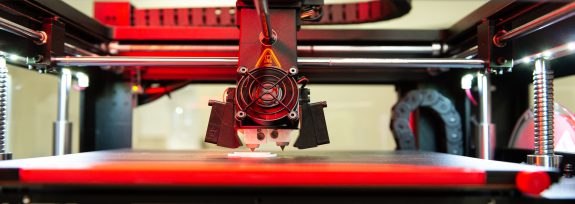3D Printing
Additive manufacturing, or 3D printing – Can it ever be commercially viable?

Additive manufacturing
Additive manufacturing, which can also be referred to as 3D printing, has been gaining more and more traction over the years due to the unique capabilities it brings. While traditional manufacturing has been mainly ‘subtractive’ in nature (producing parts through the cutting or removal of material), additive manufacturing is a process that adds layers to build, construct and engineer a wide variety of complex products. Additive manufacturing of parts has been used for a wide range of use cases, spanning various industries such as construction, automotive, aviation, space and medical. Materials can span from standard plastics like PLA, to harder materials such as Titanium.
Additive manufacturing is one aspect of the industry 4.0 collective that has benefited immensely from the digital transformation of traditional manufacturing. Computer aided design (CAD) software and innovative 3D scanners are frequently used in conjunction to 3D printers, where the former assists with complex design and engineering, while the printer itself carries out the tasks of producing the complex additive product.
Advantages and disadvantages
Both 21st century additive manufacturing, and traditional subtractive manufacturing, have their strengths and weaknesses. 3D printing allows more control and freedom with relation to geometrically complex shapes, and it mostly uses less amounts of material compared to traditional manufacturing techniques. Material can also be quite exploratory and experimental in nature, with many different substrates available for use in 3D printing. In contrast, additive manufacturing can lack the mechanical properties of comparable materials using subtractive manufacturing processes. Moreover, if the temperature of the 3D printed product fluctuates extensively, it can become increasingly more difficult to get consistency and repeatability, even when produced from one design element. Finally, although significant advances have been made in the field of additive manufacturing, most 3D printing are still incredibly slow when it comes to fabrication, making large scale manufacture troublesome.
The reasons above somewhat contribute to the slow adoption rate in which the commercialisation of products can occur using 3D printing. Although, with rapid improvements in additive technologies, it is only a matter of time before more commercially viable solutions are produced, especially at a time when global supply chain disruptions have created chaos in traditional subtractive manufacturing and offshore processing.
PRP and the future
As an engineering firm that values innovation and the desirable need to adapt to changing external environments, PRP has been using 3D printing as a valuable tool to teach our employees how to design, engineer and fabricate products and widgets for use within our workplace. 3D printing enables our employees to learn and explore creative solutions which have already seen gains in production efficiency, and reduction in tooling and assembly related processes.
PRP’s additive processes are still very much in their infancy, but as the technology becomes more commercially viable, we could certainly carry forward our history of strong innovation and make additive manufacturing a part of our core offering.
